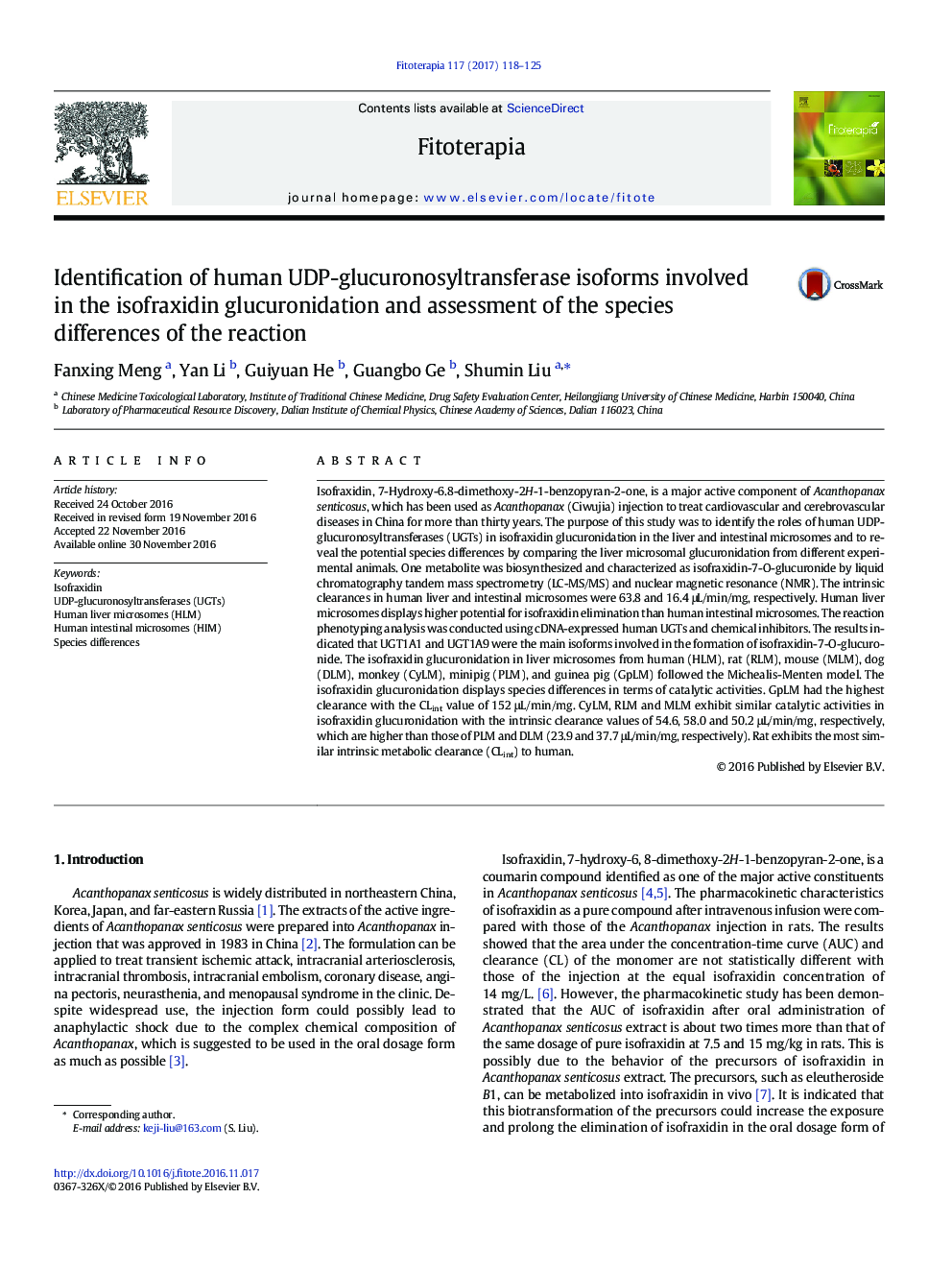| کد مقاله | کد نشریه | سال انتشار | مقاله انگلیسی | نسخه تمام متن |
|---|---|---|---|---|
| 5555155 | 1559628 | 2017 | 8 صفحه PDF | دانلود رایگان |

Isofraxidin, 7-Hydroxy-6.8-dimethoxy-2H-1-benzopyran-2-one, is a major active component of Acanthopanax senticosus, which has been used as Acanthopanax (Ciwujia) injection to treat cardiovascular and cerebrovascular diseases in China for more than thirty years. The purpose of this study was to identify the roles of human UDP-glucuronosyltransferases (UGTs) in isofraxidin glucuronidation in the liver and intestinal microsomes and to reveal the potential species differences by comparing the liver microsomal glucuronidation from different experimental animals. One metabolite was biosynthesized and characterized as isofraxidin-7-O-glucuronide by liquid chromatography tandem mass spectrometry (LC-MS/MS) and nuclear magnetic resonance (NMR). The intrinsic clearances in human liver and intestinal microsomes were 63.8 and 16.4 μL/min/mg, respectively. Human liver microsomes displays higher potential for isofraxidin elimination than human intestinal microsomes. The reaction phenotyping analysis was conducted using cDNA-expressed human UGTs and chemical inhibitors. The results indicated that UGT1A1 and UGT1A9 were the main isoforms involved in the formation of isofraxidin-7-O-glucuronide. The isofraxidin glucuronidation in liver microsomes from human (HLM), rat (RLM), mouse (MLM), dog (DLM), monkey (CyLM), minipig (PLM), and guinea pig (GpLM) followed the Michealis-Menten model. The isofraxidin glucuronidation displays species differences in terms of catalytic activities. GpLM had the highest clearance with the CLint value of 152 μL/min/mg. CyLM, RLM and MLM exhibit similar catalytic activities in isofraxidin glucuronidation with the intrinsic clearance values of 54.6, 58.0 and 50.2 μL/min/mg, respectively, which are higher than those of PLM and DLM (23.9 and 37.7 μL/min/mg, respectively). Rat exhibits the most similar intrinsic metabolic clearance (CLint) to human.
112
Journal: Fitoterapia - Volume 117, March 2017, Pages 118-125